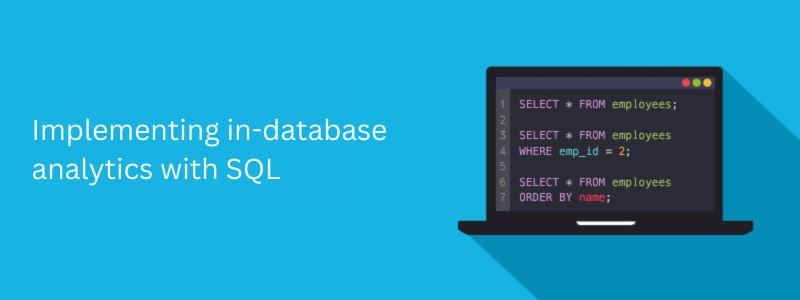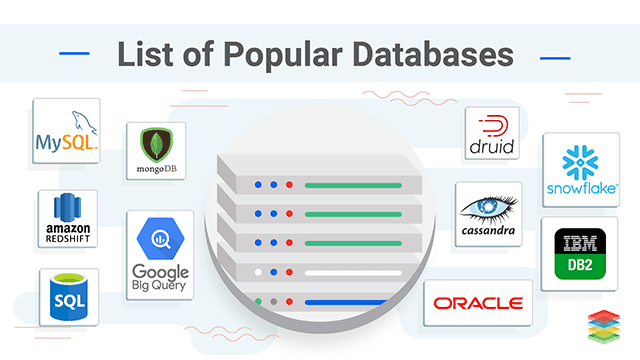Introduction: The Power of SQL Server for Modern Insights
Currently, companies look for methods that can help them discover useful insights from large piles of data. In-database analytics is one of the most potent instruments being used today to respond to this need. It is a unique strategy that enables SQL server consulting companies to perform complicated analytic functions on the go without having to transfer data between different systems and even into the DBMS itself. The incorporation of in-database analytics makes it possible for companies to improve operational efficiencies and generate more informative insights from their database.
Evolution of Data Processing Technology
Data processing technology has changed a lot over the years. In the initial stages, people did data analysis on file file-based system. Nevertheless, the available systems could not properly process a huge amount of data. Organizations could now efficiently store and manage structured data through the use of relational databases. This brought about the SQL (Structured Query Language) era, a strong language used for communicating with relational databases.
What is SQL and how does it relate to in-database analytics?
SQL server experts referred to as the Structured Query Language is used in the management of relation databases in particular. It allows easy inputting of queries, data addition, changes, and deletion on database sets. Users in the area of data analysis frequently use SQL which enables them to quickly get particular data points from huge tables.
SQL is indispensable when it talks about in-database analytical processing. With such leverage, organizations would be able to do multiple analytic functions directly in the data rather than moving it to different analytics systems. This reduces time, enhances data accuracy, and assists in securing information.
Why SQL is Important for Data Analysis?

Due to its straightforwardness and adaptability, SQL is of paramount importance in the data mining process. This enables users to write their filters, summations, and transformations of the data in many different ways. Analysts can then use SQL to pull out usable information in their research work. This allows them to act on the findings and make appropriate business decisions.
A further benefit of SQL is handling huge amounts of data swiftly. Many times, classic data analysis approaches are inappropriate for handling large amounts of data. However, organizations that deal with large volumes of data should opt for SQL which has been tailored to handle similar situations.
Benefits of using in-database analytics with SQL
Improved Performance
The modern DBMS query execution engines are highly optimized and thus, organizations can perform the analytic operations directly within the database for improved performance. As a result, it leads to fast data processing which allows for the use of real-time or near-real-time analytics.
Cost Savings
With in-database analytics, there is no need to transport data across systems hence they help in minimizing data transfer costs and storage expenses. Additionally, the companies will not need to purchase separate analytics tools since they already have a database foundation and associated talents.
Data Security
The use of in-database analytics means that an organization keeps its data in its safe and trusted database environment. This facilitates improved data governance and minimizes the likelihood of data breaches being experienced.
Scalability
The advantage of in-database analytics is that it provides a very easy scalability framework when an organization’s volume of data grows. Distributed systems capable of performing high-performance analytics operate on big data stored in DBMSs which are specifically meant for accommodating huge amounts of data.
Achieve Cloud Scale On-Prem: SQL Server 2023 CU10 Capabilities
Upgrading to SQL Server 2022 Cumulative Update 10 proves a pivotal milestone in achieving functional convergence through cloud-inspired scale
How in-database analytics revolutionizes data insights?
1. Eliminating Data Movement
In-database analytics differs from traditional methods in several ways including eliminating the necessity to move the data to different analytics tools. In the traditional context, organizations had to go through stages of data extraction from the database, transform it, and load it into an analytics tool for analysis. In-database analytics enables all these steps to be done within the database in question, thus reducing the time and effort used.
2. Real-Time Analytics
Data analytics makes organizations capable of doing analytical processing on their data in real or near real-time. DBMSs with powerful processing capacities help organizations to analyze data as it is generated, facilitating faster decision-making and responses to dynamic business circumstances.
3. Deeper Insights
This is part of the reason why in-database analytics enables more advanced analysis of data. This enables organizations to realize greater insights as well as patterns that may have gone unnoticed thus the need for database analytics capabilities that enable the organization to perform among other advanced analytics operations by doing predictive modeling, and machine learning directly on data held.
Implementing in-database analytics with SQL

Optimize Database Design
Optimally, the database design should be done to fully gain from in-database analytics. This entails appropriate indexing, partitioning, and data organization techniques for enhanced query performance.
Use SQL Extensions
Numerous DBMSs have SQL extensions that can support the accomplishment of advanced analytics operations. Get to know these extensions and use them for carrying out intricate analysis right in the database.
Leverage Parallel Processing
Leverage the parallel processing support provided in modern DBMSs to share computation across nodes. This can greatly enhance investigation performance over big data.
Best practices for using in-database analytics with SQL
Start with Small Datasets
It is also recommended to test and tune your queries using small datasets when implementing in-database analytics. When you fine-tune your strategy, you could move gradually toward larger datasets.
Monitor Query Performance
Track the performance of your SQL queries regularly to identify bottlenecks and areas for optimization. Most of today’s DBMSs provide you with query profiling tools to understand execution plans for queries and identify performance problems.
Stay Updated
Stay up-to-date with the recent developments in IN-database analytics and SQL technologies. Regular updates include new features and optimizations and stay updated to maximize advancements.
Tools and technologies for in-database analytics with SQL

Oracle Database
Oracle Database offers a comprehensive suite of in-database analytics features, including advanced analytics, predictive modeling, and machine learning capabilities.
IBM Db2
IBM Db2 provides a wide range of in-database analytics functions, allowing organizations to perform advanced analytics operations directly within the database.
Microsoft SQL Server
Microsoft SQL Server offers powerful in-database analytics capabilities through its SQL Server Analysis Services (SSAS) and SQL Server Machine Learning Services.
Conclusion
SQL’s role in powering the cutting-edge analytics of in-database data is changing how organizations turn raw 1s and 0s into meaningful knowledge. This will allow businesses to undertake complex analytical operations right in the database, thereby reaping a new level of efficiency, cost-effectiveness, and data security. Real-time analytics allow organizations faster, more informed decision-making, and the ability to perform advanced analytics right in the database gives them a superior understanding of user behavior. Through best practices and the appropriate tools and technologies, organizations can meet this potential for in-database analytics for a transformational enterprise of data insights.

